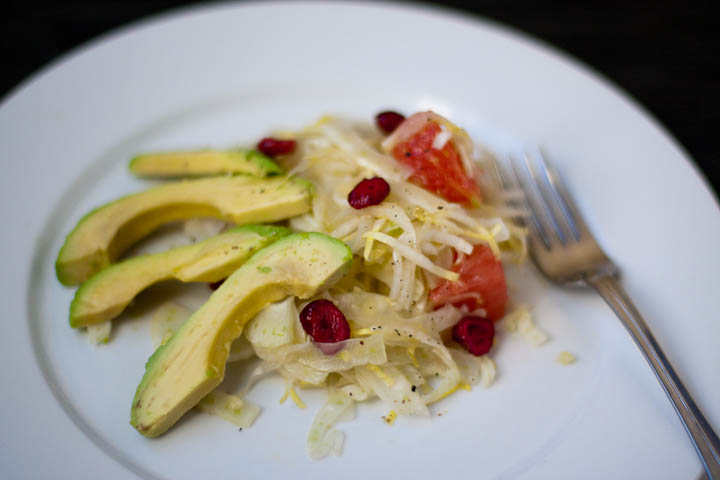I was introduced to this soup by my Russian-born husband and it has become one of our staple, deeply comforting foods. There are probably thousands of variations on the ingredients and techniques of making borscht, and having looked through a number of recipes, it seems as though the only thing they have in common with each other is the use of beets.
This version of borscht is more akin to a vegetable soup, unlike the classic Ukrainian borscht which uses beef stock, ham and other meats. There’s a fair bit of prep work required, as each vegetable will need to be peeled, diced, shredded, grated, and added to the pot in a particular order, but it’s well worth it to ensure proper cooking of the vegetables.
Note that this recipe calls for the beet to be grated, and I have since learned that raw beets spatter a lot when they are being shredded. I’d wear an apron, as your workspace will look like a crime scene from Dexter when you’re done.
from Please to the Table by Anya von Bremzen
This soup tastes best if it’s allowed to stand for a few hours before serving. The flavours only continue to deepen and improve overnight.
- 6 tbsp butter
- 1 large onion, finely chopped
- 1 large carrot, peeled and grated
- 1 large green bell pepper, cored, seeded and cut into 1/4 in ch dice
- 4 cups shredded green cabbage (about half a small head)
- 1 large beet, peeled and grated
- 1 rib celery, cut into 1/4 inch dice
- 1/2 tart apple, cored and cut into 1 inch dice
- 2 medium Russet potatoes, peeled and cut into 1 1/2 inch cubes
- 1 can (6 ounces) tomato paste
- 4 cloves garlic, minced
- 8 cups chicken stock, vegetable stock or water
- bouquet garni – 1 bay leaf and 8 peppercorns
- 1 teaspoon sweet paprika
- 1 tablespoon fresh lemon juice
- salt and freshly ground black pepper
- 1/2 tsp sugar
- finely chopped parsley and dill
- sour cream
Melt the butter in a large soup pot (at least 6 quarts) over medium heat. Add the onion, carrot and bell pepper. Saute until the onion is slightly softened, 5 minutes.
Stir in the cabbage, beet and celery and continue to saute, stirring and tossing occasionally, for about 10-15 minutes until the cabbage has wilted and softened.
Stir in the apple, potatoes, tomato paste and garlic. Add the stock and bouquet garni and bring to a boil. Reduce the heat and simmer, covered for 20 minutes.
Turn off the heat and add the paprika, lemon juice, sugar, salt and pepper. Taste the soup – it should be savoury and slightly tangy. Add more lemon juice and salt as needed.
If you can, let the soup stand for at least 2-3 hours or overnight. Serve the soup garnished with lots of dill, parsley and a dollop of sour cream.



